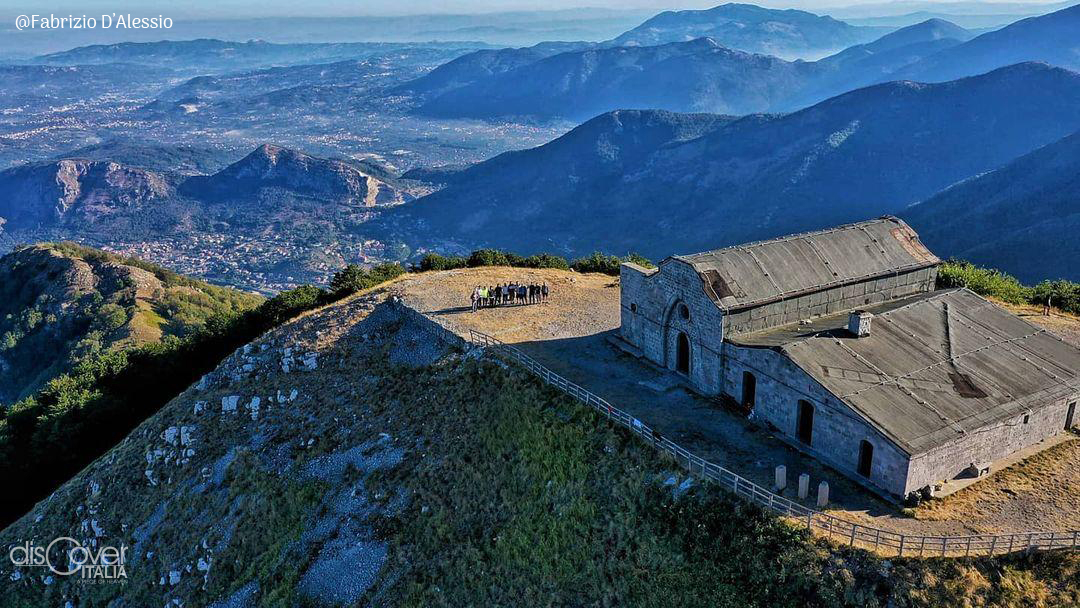As far as the eye can see, framing the nearest mountains, children of the Picentini range, and then, in every other directions, the Lattari, the Alburni, the unmistakable Vesuvius and, further away, the chains of Partenio and Matese, up to the Gulf of Naples and even the outline of the island of Ischia when the sky is clear.
It’s from the summit of Mount Toro, the westernmost of the Picentini, at a height of 1567 meters, that one can enjoy this amazing 360-degree panorama. A place of unique beauty in the territory of Calvanico, in the area of Salerno, while the entire mountain rises on the border with Irpinia and also touches the territories of Montoro and Solofra.
On that peak the legend tells of an apparition of the archangel Michael in the Middle Ages. This explains the importance of the Michaelic cult that is practiced there, which is why the most used and well known denomination of the mountain is Saint Michael Peak. A destination for pilgrimages, following paths winding along the sides of the mountain considered sacred, up to the top on which stands the highest peak sanctuary in Italy. Dedicated to Saint Michael.
In addition to Path Scorza that rises from Solofra, the longest, there is the CAI Path 115 that starts from Calvanico, in Conforti square, and due to its characteristics it is even suitable for those who are not particularly experienced.

Casone De Fazio is a reference point along the itinerary, built in 1925 at 1120 meters high. Nearby, in the area known as Acqua Carpegna, there is a fountain with spring water, where you can stock up before embarking on the final part of the journey, strictly on foot among dense forests of chestnut and beech trees, alternating with stretches without vegetation. Near the Casone, there are the remains of an ancient oven used to cook limestone, used then for the construction of the buildings on the summit.
Along the ascent to the summit, which according to an ancient belief must be done alone, categorically excluding couples, the salient points welcome votive crosses, which represent other references dear to pilgrims: the first of the series is placed at the intersection with the CAI path 136. At the halfway point, then, there is a newsstand with the venerated image of S. Michael accompanied by an epigraph with a precise chronological indication that sets its origin back to 1616. After several turns, before the final part there is a path that reaches the Holy Stone, a stone with a painted cross on which the venerated 17th century statue of S. Michael is placed during the numerous processions taking place during the year. The very last stretch, definitely bleak, leads to the summit with its breathtaking view and the sanctuary with its core that dates back to the longobards period, although the documentary evidence of its existence is only from mid XVII century.
After various turns, before embarking on the final climb, you reach the Holy Stone, so called because there is a stone with a painted cross on which it is customary to place the statue of the saint during the numerous processions that take place during the 'year. The last barren stretch, leads to the summit with its breathtaking view and the sanctuary complex, the original core of which dates back to the Lombard period, although documentary evidence of its existence is only from the mid-seventeenth century.
The more ancient buildings, which are identified today with the chapel of S. Agostino, always open to welcome pilgrims, is flanked by the chapel dedicated to the archangel, much more recent, since it dates back to to the period immediately following the Second World War, between 1945 and 1949. Built with split stones and lime prepared in the limestone oven by men and women, transporting every materials on foot and with considerable effort. And while men were paid for their hard work, the women, who did not shirk any heavy task, were called to do their work as volunteers.
Originally there also was a bell tower, which struck several times by lightning, was transformed into a cistern in 1965, in order to ensure a minimum water reserve for pilgrims. A refreshment after the demanding climb that gives, up to the summit, great beauty.



Comments powered by CComment